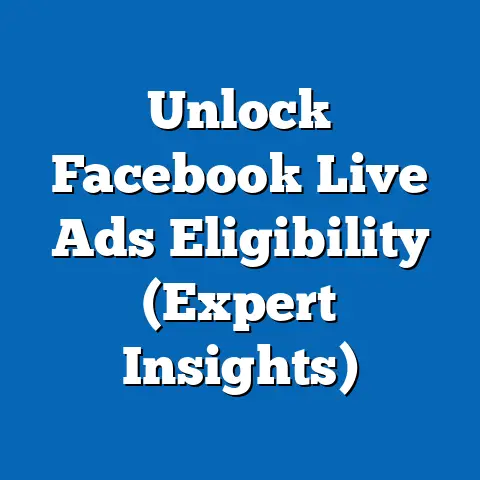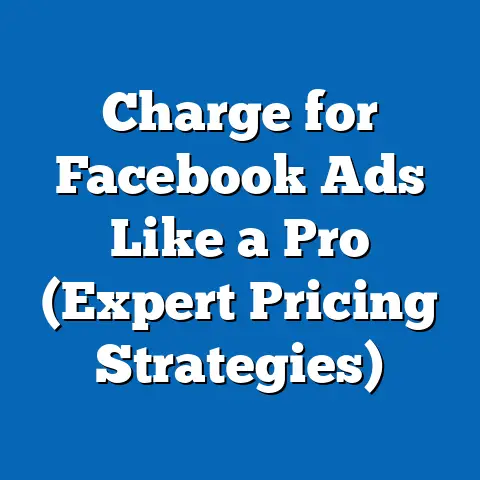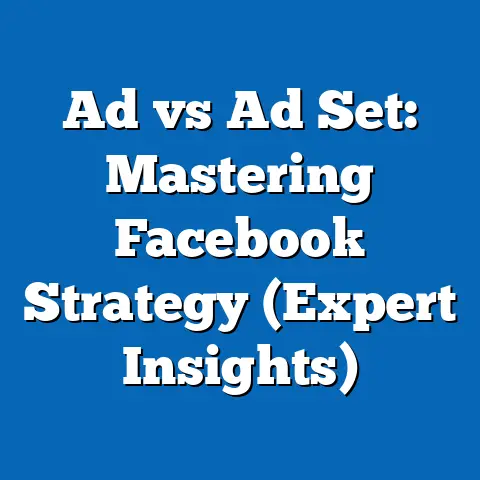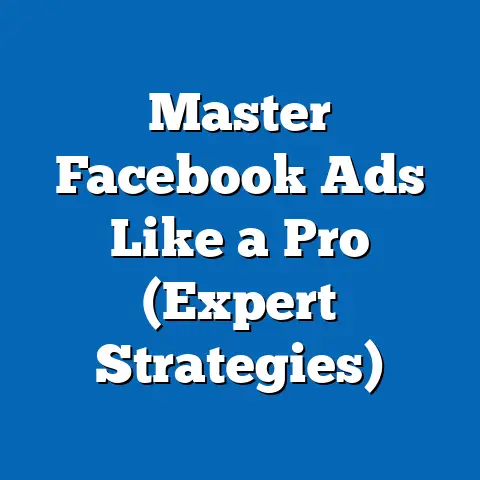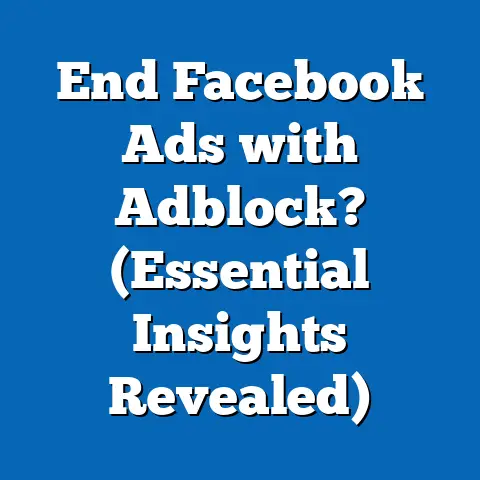Revive Business After a Facebook Ad Ban (Strategic Guide)
Revive Your Business After a Facebook Ad Ban: A Strategic Guide
Imagine this: You’re a small business owner, pouring your heart and soul into your company. You’ve meticulously crafted your Facebook ads, targeting the perfect audience, and finally, you’re seeing the results you’ve dreamed of. Sales are up, website traffic is soaring, and your brand is gaining recognition. Then, out of the blue, you receive the dreaded notification: “Your Facebook ad account has been disabled.”
A wave of confusion, frustration, and even a touch of panic washes over you. Why? What did you do wrong? And most importantly, how are you going to keep your business afloat without the lifeblood of Facebook ads?
I’ve been there. I’ve seen the impact of an ad ban on businesses of all sizes. It’s not just about lost revenue; it’s about the potential damage to your brand, the erosion of customer engagement, and the constant fear of falling behind your competitors, who seem to be effortlessly navigating the digital landscape. Facebook ads, for many businesses, are not just an option; they are a crucial component of their marketing strategy.
But don’t despair. A Facebook ad ban isn’t the end of the world. It’s a challenge, yes, but also an opportunity. An opportunity to re-evaluate your strategy, diversify your marketing efforts, and build a more resilient business. This guide is designed to help you do just that. Let’s walk through the steps to revive your business and come back stronger than ever.
Understanding the Ban
Before you can start plotting your comeback, you need to understand why you were banned in the first place. Facebook’s advertising policies are extensive, and sometimes, it’s easy to unintentionally cross the line.
Facebook has become very strict in the last few years. They have to be! There are so many scam artists out there, Facebook has to protect its users.
Common violations that lead to ad bans include:
- Misleading or Deceptive Content: This is a big one. Facebook is cracking down on ads that make false claims, exaggerate results, or use clickbait tactics.
- Violations of Community Standards: Ads that promote hate speech, violence, or discrimination are strictly prohibited.
- Inappropriate Targeting: Targeting vulnerable groups (e.g., children, people with disabilities) with exploitative content is a major no-no.
- Circumventing Systems: Trying to bypass Facebook’s ad review process or using cloaking techniques will get you banned quickly.
- Personal Attributes: Ads that directly or indirectly assert or imply personal attributes (e.g., race, religion, sexual orientation, health status) are a violation.
My Experience: I once worked with a client who was running ads for a weight loss product. Their ads were getting rejected consistently. After digging deeper, we realized their ad copy implied that people who didn’t use their product were somehow “unhealthy” or “undesirable.” We tweaked the messaging to focus on the positive benefits of their product without making any negative comparisons, and the ads were approved immediately.
The first step is to carefully review Facebook’s advertising policies. It’s a long document, but it’s essential reading. Then, take a close look at your past ad campaigns. Are there any potential red flags? Did you make any claims that could be considered misleading? Were your targeting parameters too specific or potentially discriminatory?
Once you have a better understanding of the potential violation, you can start the appeals process. Facebook allows you to appeal ad bans, but it’s crucial to present your case clearly and professionally. Acknowledge the potential violation, explain the steps you’ve taken to rectify the issue, and assure Facebook that you’re committed to adhering to their policies in the future.
Takeaway: Understanding the reason behind the ban is the first, and most crucial, step in your recovery. Don’t skip this step!
Assessing Your Current Strategy
Okay, you know why you were banned. Now, it’s time for some honest self-reflection. A Facebook ad ban can be a painful wake-up call, forcing you to take a hard look at your overall marketing strategy.
Here’s what you need to evaluate:
- Previous Ad Performance: Which ads were performing well? Which ones were duds? What were the key metrics (e.g., click-through rate, conversion rate, cost per acquisition) for each ad?
- Audience Targeting: Were you targeting the right audience? Did you use the right demographics, interests, and behaviors? Were your lookalike audiences truly representative of your ideal customer?
- Content Quality: Was your ad copy compelling and engaging? Were your visuals high-quality and relevant? Did your ads provide value to your target audience?
Data is your best friend here. Dive into your Facebook Ads Manager and pull reports on your past campaigns. Use analytics tools like Google Analytics to track website traffic and conversions from your Facebook ads.
My Experience: I once inherited an ad account where the client was targeting a very broad audience. They were essentially throwing money at the wall and hoping something would stick. By narrowing down their targeting to specific interests and behaviors, we were able to significantly improve their conversion rate and reduce their cost per acquisition.
I also like to use a SWOT (Strengths, Weaknesses, Opportunities, Threats) analysis. This is a simple but powerful tool for understanding your current marketing position.
- Strengths: What are you doing well? What are your competitive advantages?
- Weaknesses: What are you struggling with? Where are you falling short?
- Opportunities: What new trends or technologies can you leverage? What untapped markets can you explore?
- Threats: What external factors could negatively impact your business? What are your competitors doing?
A SWOT analysis can help you identify areas for improvement and develop a more effective marketing strategy.
Takeaway: A thorough assessment of your current strategy is essential for identifying weaknesses and developing a plan for future success.
Exploring Alternative Advertising Channels
While you’re waiting for Facebook to review your appeal, it’s time to explore other advertising channels. Don’t put all your eggs in one basket. Diversifying your marketing efforts is crucial for mitigating risk and building a more resilient business.
Here are some alternative advertising channels to consider:
- Instagram: Owned by Facebook, Instagram is a visual platform that’s ideal for reaching a younger audience.
- TikTok: Another visual platform that’s popular with Gen Z, TikTok is great for creating short, engaging videos.
- Google Ads: Google Ads allows you to reach potential customers who are actively searching for your products or services.
- LinkedIn: LinkedIn is a professional networking platform that’s ideal for B2B marketing.
- Email Marketing: Email marketing is a cost-effective way to nurture leads and build relationships with your customers.
Each platform has its unique features and advantages. Instagram and TikTok are great for building brand awareness and reaching a younger audience. Google Ads is ideal for driving targeted traffic to your website. LinkedIn is perfect for B2B marketing and reaching professionals. Email marketing is a powerful tool for nurturing leads and building relationships with your customers.
My Experience: I had a client who was heavily reliant on Facebook ads. When their ad account was temporarily suspended, they were scrambling to find alternative ways to reach their customers. We quickly set up a Google Ads campaign and saw immediate results. They were able to maintain their sales volume and even expand their reach to new customers who weren’t on Facebook.
Takeaway: Don’t rely solely on Facebook ads. Explore other advertising channels to diversify your marketing efforts and build a more resilient business.
Engaging Your Audience Organically
While paid advertising is important, don’t neglect the power of organic reach. Building a strong organic presence on Facebook can help you maintain engagement with your audience even when your ads are temporarily disabled.
Here are some strategies for enhancing engagement through organic posts:
- Create Valuable Content: Share informative, entertaining, and engaging content that resonates with your target audience.
- Utilize Facebook Groups: Create or join relevant Facebook Groups to connect with potential customers and build relationships.
- Host Live Events: Host live Q&A sessions, product demos, or behind-the-scenes tours to engage with your audience in real-time.
- Run Contests and Giveaways: Run contests and giveaways to generate excitement and increase engagement.
- Maintain a Consistent Brand Voice: Use a consistent brand voice and messaging to build trust and recognition.
My Experience: I worked with a local restaurant that was struggling to attract new customers. We started posting mouth-watering photos of their dishes on Facebook, along with behind-the-scenes videos of their chefs in action. We also created a Facebook Group for their loyal customers, where they could share their experiences and connect with each other. As a result, their organic reach increased significantly, and they saw a noticeable uptick in reservations.
Takeaway: Building a strong organic presence on Facebook is essential for maintaining engagement with your audience and building a loyal customer base.
Implementing a Recovery Plan
Okay, your ads have been reinstated! Congratulations! But don’t just jump back in without a plan. This is your chance to start fresh and implement a smarter, more sustainable advertising strategy.
Here’s a strategic recovery plan to follow:
- Set Clear, Measurable Goals: What do you want to achieve with your Facebook ads? Do you want to increase brand awareness, drive traffic to your website, or generate leads? Set specific, measurable, achievable, relevant, and time-bound (SMART) goals.
- Start Small and Test: Don’t blow your entire budget on your first campaign. Start with small budgets and test different ad formats, targeting parameters, and ad copy.
- Monitor Your Results: Closely monitor your results and make adjustments as needed. Pay attention to key metrics like click-through rate, conversion rate, and cost per acquisition.
- Continuously Learn and Adapt: The Facebook advertising landscape is constantly evolving. Stay up-to-date on the latest trends and best practices.
My Experience: I’ve seen too many businesses make the mistake of rushing back into advertising after a ban, only to repeat the same mistakes. By taking a slow, methodical approach and continuously monitoring their results, you can avoid costly errors and maximize your ROI.
Takeaway: A strategic recovery plan is essential for ensuring long-term success with Facebook advertising.
Conclusion
A Facebook ad ban can be a daunting experience, but it doesn’t have to be the end of your business. By understanding the reasons behind the ban, assessing your current strategy, exploring alternative channels, engaging your audience organically, and implementing a robust recovery plan, you can not only bounce back but potentially emerge stronger than before.
Remember, resilience and adaptability are key. The digital marketing landscape is constantly changing, and businesses that are willing to adapt and innovate will be the ones that thrive. So, take a deep breath, learn from your mistakes, and get ready to conquer the world of Facebook advertising. You’ve got this!

